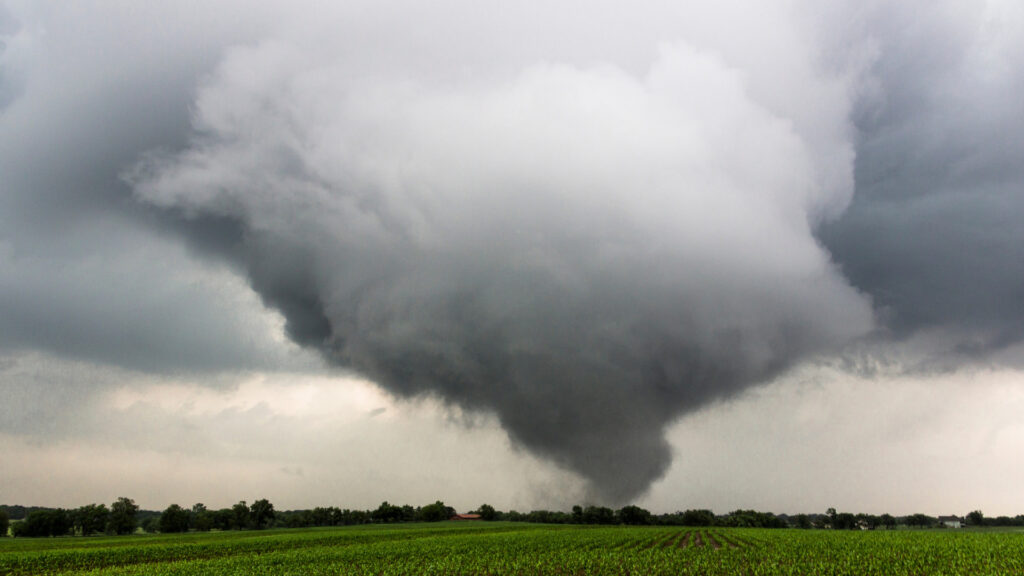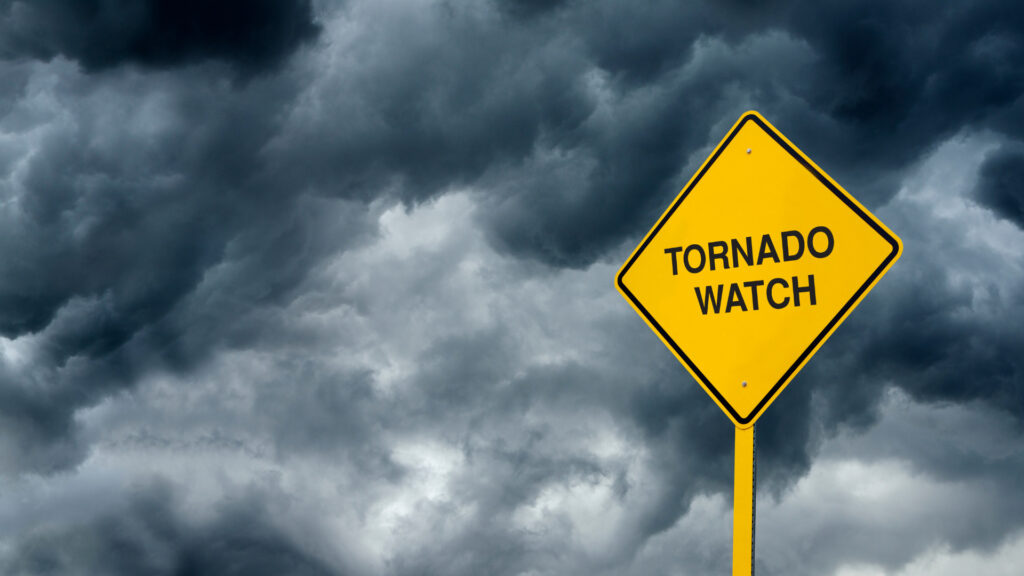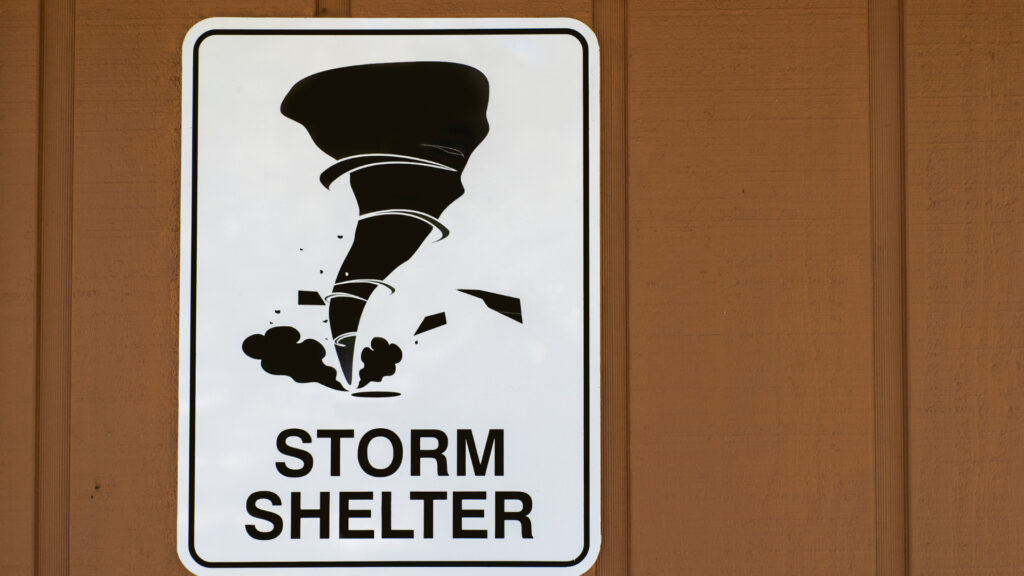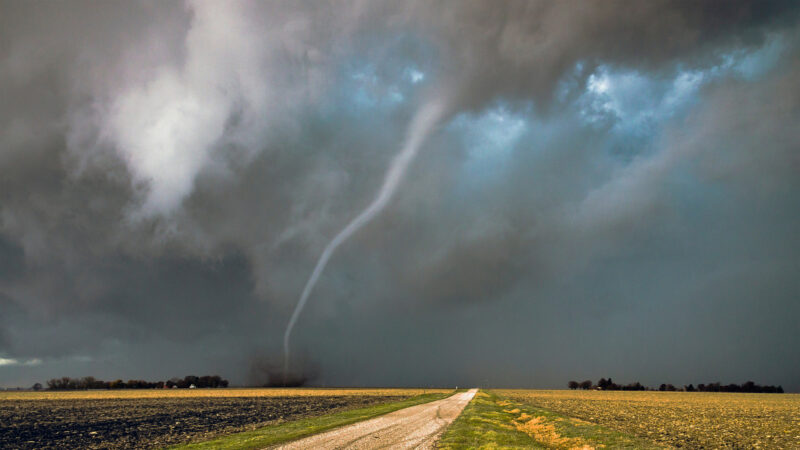Table of Contents Show
When you watch the weather channel for days waiting for a hurricane to arrive, you have plenty of time to prepare or evacuate.
Unfortunately, tornadoes don’t offer the same amount of time. That means you need to prepare ahead of time and know the levels of a tornado.
Another unique attribute of these violent storms is that they aren’t categorized before they touch down. Officials determine the different levels of a tornado after they survey the damage.
So while you may know that a Category 4 hurricane will hit your city tomorrow, you have no idea if an EF1 or EF5 tornado will touch down until after it happens.
Let’s learn more about tornadoes, their different levels, and how to stay safe!
What Is a Tornado?
There are all kinds of severe weather storms, from hurricanes to tornadoes to blizzards.
What makes a tornado different from other outbreaks is its funnel cloud. This funnel is a narrow, violently rotating air column extending from a thunderstorm to the ground.
Tornadoes start from severe thunderstorms that form towering clouds in the atmosphere. Scientists call these supercells. Then when air currents and temperatures collide, these storms form a vortex of pressure that gains speed.
Eventually, with the right conditions, these can touch the ground and form tornadoes with speeds from 60 to 200 miles per hour. Tornadoes are unpredictable and have different levels of damage, which adds to their dangerous nature.

Where Do Tornadoes Occur?
Contrary to what you might think, tornadoes aren’t American storms. They occur all over the world. In fact, tornadoes happen on every continent except Antarctica.
Argentina and Bangladesh have two of the highest concentrations of tornadoes outside the United States.
In the States, the regions that experience the most tornadoes include the Southern Plains, Midwest, Gulf Coast, and Deep South. Texas averages the most tornadoes per year, with 150. It’s also important to consider the size of Texas. It’s two to four times as big as neighboring states.
Other states with a high number of tornadoes per year include Oklahoma, Kansas, Iowa, Illinois, Mississippi, Alabama, and Florida. They all average 50 or more twisters per year.
When Are Tornadoes Most Likely to Form?
Tornado season varies from region to region. In the Southern Plains, the most active months are May and June. The Gulf Coast states see more tornadoes in early spring. The Northern Plains and Midwest have a later tornado season, beginning in June.
Over the last 30 years, the most tornadoes have occurred in April, May, and June. Although tornadoes can happen anytime, they generally touch down in the evening from 4 to 9 p.m. due to changing daytime and evening temperatures.
Where Is Tornado Alley in the US?
Although tornadoes can occur anywhere in the country, Tornado Alley is the central region of the United States, where the cool, dry air from the Rockies mixes with the warm, moist air from the Gulf of Mexico. These air currents and storms vary; thus, the levels of a tornado also vary.
This area extends from northern Texas into Oklahoma, Kansas, Nebraska, and South Dakota. This central region is considered Tornado Alley because of the high amount of tornadoes that touch down each year.
What’s the Difference Between a Tornado Watch and a Tornado Warning?
It’s essential to know the difference between a tornado watch and a tornado warning so you know how to prepare and respond. The NOAA Storm Prediction Center meteorologists issue a tornado watch. They monitor the weather 24/7 across the country.
When conditions are favorable for a tornado, they’ll issue a tornado watch for a certain area. This doesn’t mean a tornado has touched down, only that the possibility is high. This means staying tuned to your local weather station in case a warning is issued.
Your local NOAA National Weather Service Forecast Office meteorologists issue tornado warnings. A warning means someone has reported a tornado, and you must act immediately.
Sometimes a tornado warning can cover entire counties or just part of a county. However, they move fast and unpredictably. Thus, you should never delay responding to a tornado warning.
Additionally, areas that experience frequent storms will often have tornado warning alarms that blare through your city or town. Always have an emergency action plan if you live or will travel through these areas.

What Are the Different Levels of a Tornado?
Tornadoes are assigned different levels based on their severity. Like hurricanes, scientists use a numeric scale that identifies wind speeds. This scale also considers the damage when determining the Enhanced Fujita (EF) Scale rating.
The National Weather Service explains, “When tornado-related damage is surveyed, it is compared to a list of Damage Indicators and Degrees of Damage which help estimate better the range of wind speeds the tornado likely produced. From that, a rating (from EF0 to EF5) is assigned.”
However, unlike hurricanes, officials determine the levels of a tornado after it has passed. The National Weather Service is the only federal agency with the authority to provide official tornado EF Scale ratings. So let’s learn what each rating means.
EF0-EF1
This is the lowest level of a tornado. Typically, it won’t cause much damage, and the tornado is considered weak.
Small barns or outbuildings may have damage. Branches may break off of trees. Wind speeds range from 65 to 110 miles per hour.
EF2-EF3
These levels of a tornado indicate a stronger storm passed through. Wind speeds range from 111 to 165 miles per hour.
It may tear off roofs, lift cars off the ground, cause damage to shopping malls and concrete buildings, and uproot large trees.
EF4-EF5
The worst levels of a tornado are EF4 and EF5. These violent storms have wind speeds of 166 to 200 miles per hour or more.
These twisters can level entire houses, toss cars, collapse buildings, and even hurt steel-reinforced concrete structures. These can cause catastrophic damage.
5 Tips for Tornado Safety
If you live in an area prone to tornadoes, you must know tornado safety tips. Even if you don’t regularly receive tornado watches and warnings, these storms can occur anywhere, so it’s best to prepare.
1. Know Your Community’s Warning System
One of the most important tips is to know your community’s warning system. Each town or city may have its own communication method for reporting a tornado.
If visiting a new area, always ask about shelters or sirens in case of a tornado. These warning systems save lives. But you should also act as soon as you receive the warning. Also, learn where the nearest tornado shelters are and where to go after the storm.

2. Have a Safe Room in Your House
Everyone in your family should know the safe room. Have tornado drills with your children to ensure they understand what to do should a warning be issued for your location.
This safe room should be a small, interior, windowless room on the lowest level of your house. Don’t forget your pet when you practice these tornado drills.
Keep in Mind: Now that you understand the different types of tornado’s, make sure you Understanding the Different Earthquake Levels!
3. Secure Outside Furniture and Objects
Secure outside furniture and objects when the weather service issues a tornado watch. Windy conditions can easily uplift outside items.
This becomes very dangerous as the wind can throw these items through a window. Often, injuries occur because of flying debris during a tornado.
Additionally, know that any level of a tornado can destroy or take off with outside furniture and belongings. You’ll likely never see them again if so.
4. Remove Damaged Limbs From Nearby Trees
In early spring, survey nearby trees and remove damaged limbs. They’ll likely break off even in EF1 storms. You don’t want these limbs falling on your house, breaking off, and flying through a window.
5. Have an Emergency Kit
Finally, have an emergency kit stored in your safe room. Some people call this a “Go Bag.” This should include basic first-aid items, water for a couple of days, non-perishable food items, and a manual can opener.
You should also have a battery-powered or hand crank weather radio, a flashlight, extra batteries, and cell phone chargers. You may need additional items like prescription medications or pliers to turn off utilities.
Keep in Mind: These RVers learned first hand why you don’t mess with Texas weather when a Tornado Ravaged their RV with them inside!
- 160-piece Johnson & Johnson All-Purpose Portable Emergency First Aid Kit is ideal for home, in cars, outdoors, dorm...
- All-purpose, compact first aid kit includes essential first aid supplies like cleansing wipes, gauze pads, assorted...
Be Prepared and Stay Alert This Tornado Season
It takes little effort to prepare for a tornado. Take the time to pack an emergency kit and practice tornado drills long before the day arrives when your community is under a tornado warning. Understand the levels of a tornado so you know the strength that tends to touch down in your town.
Additionally, tornadoes move fast and unpredictably. Debris from a twister can fly miles away at high speeds. Always take cover immediately, even if you don’t think the tornado will pass by your area. No video is worth your safety.
Stay alert and stay safe as this tornado season picks up! Have you ever had to hunker down in a storm shelter before?
Last update on 2024-07-25 / Affiliate links / Images from Amazon Product Advertising API







